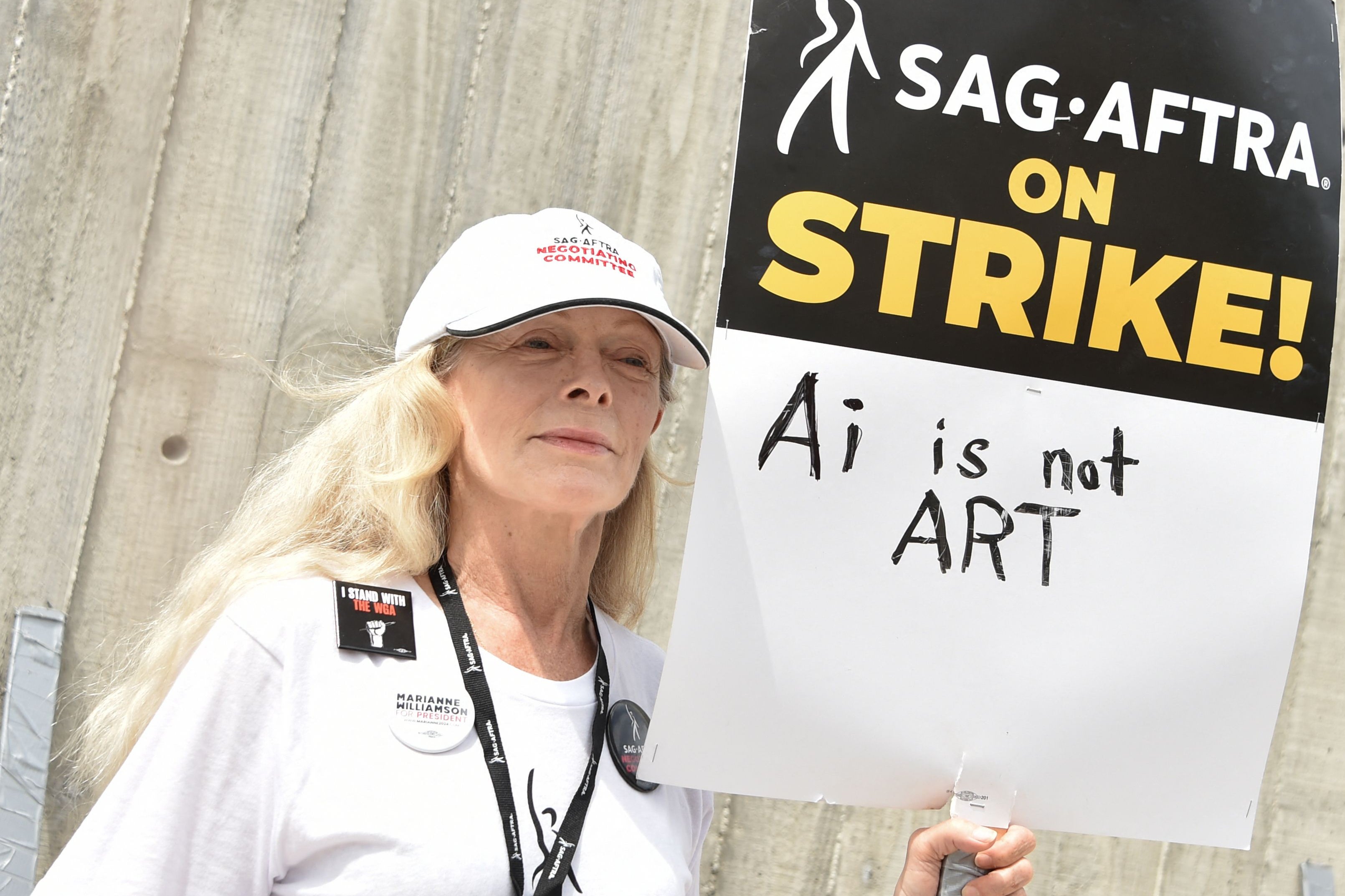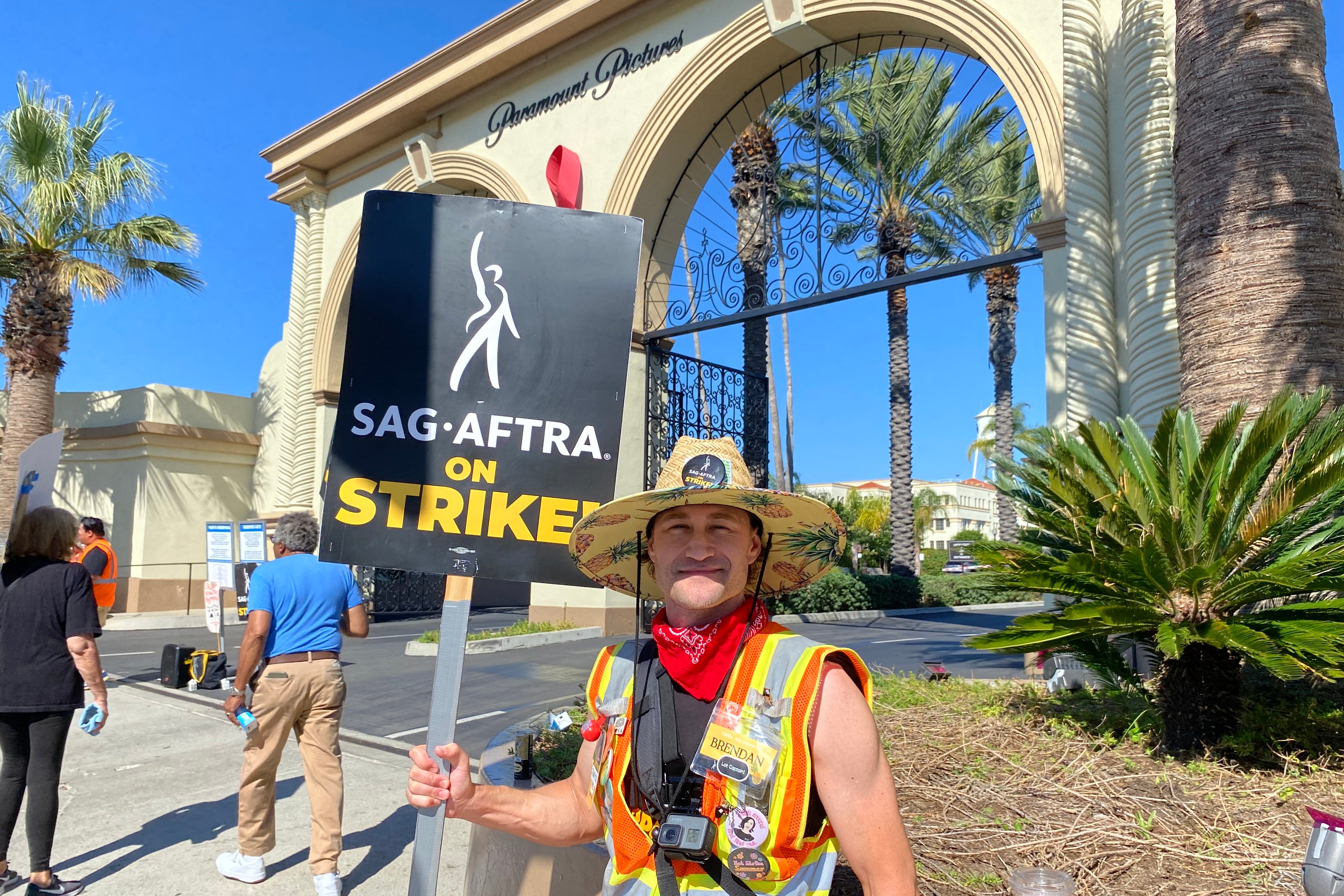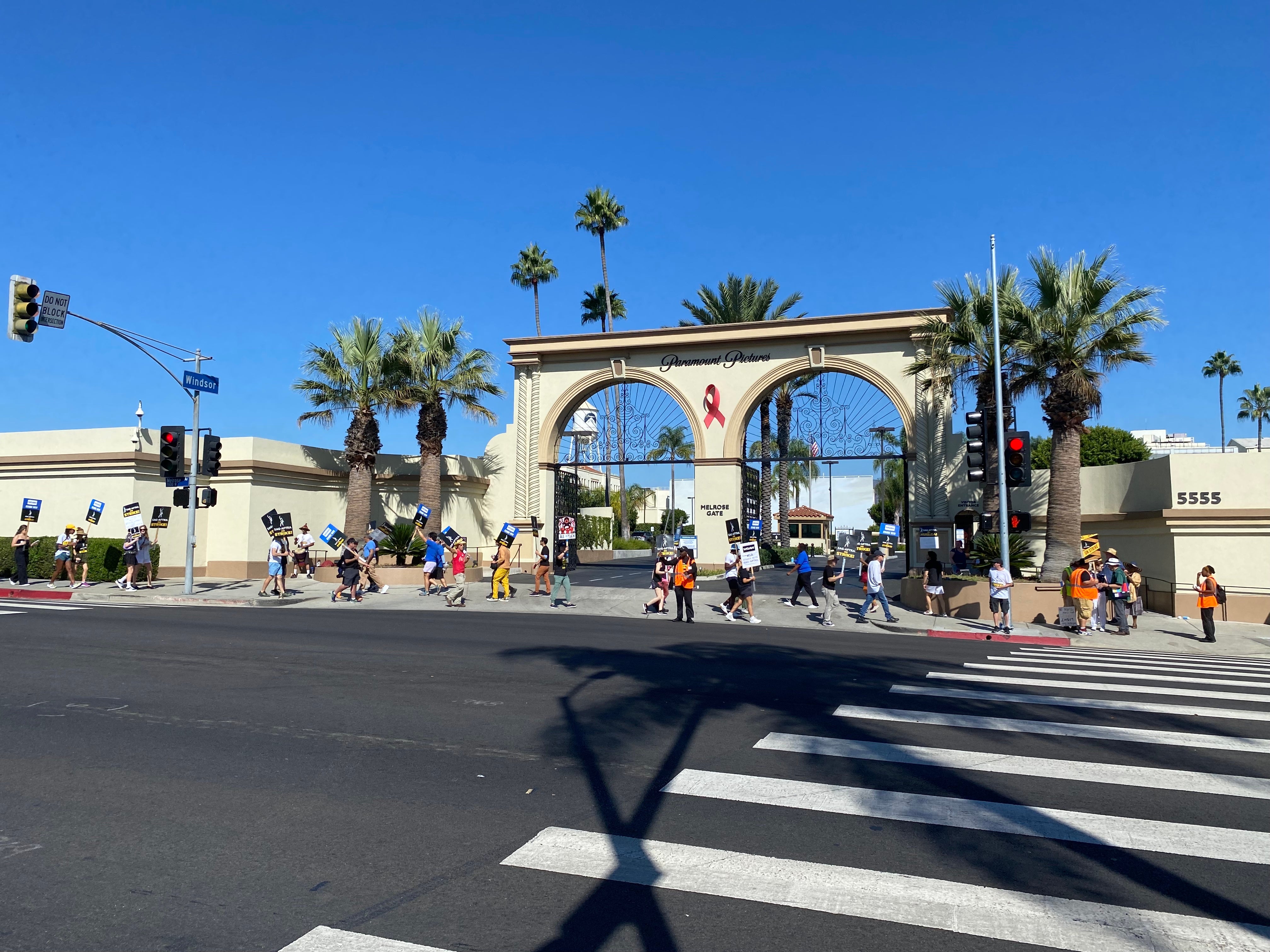Striking Hollywood actors are more fired up than ever, 100 days on: ‘We are not gonna let them break our spirits’
As the actors’ union strike reaches its 100th day without a deal, Los Angeles-based reporter Tom Murray joins the picket line to soak up some of the atmosphere on ‘Partymount’

Your support helps us to tell the story
From reproductive rights to climate change to Big Tech, The Independent is on the ground when the story is developing. Whether it's investigating the financials of Elon Musk's pro-Trump PAC or producing our latest documentary, 'The A Word', which shines a light on the American women fighting for reproductive rights, we know how important it is to parse out the facts from the messaging.
At such a critical moment in US history, we need reporters on the ground. Your donation allows us to keep sending journalists to speak to both sides of the story.
The Independent is trusted by Americans across the entire political spectrum. And unlike many other quality news outlets, we choose not to lock Americans out of our reporting and analysis with paywalls. We believe quality journalism should be available to everyone, paid for by those who can afford it.
Your support makes all the difference.Autumn has arrived in Los Angeles, but it’s still a toasty 29C outside Paramount Studios in Hollywood where, as of Saturday 21 October, striking actors will have gathered in force for 100 consecutive days. The picketers don’t mind the heat, though. Last month, as temperatures soared to over 40, they continued to march on the hot tarmac outside the offices of Netflix, Disney, Warner Bros and others.
The Sag-Aftra actors’ union and the association representing the major film and TV studios have failed to reach a resolution since actors went on strike in July, despite the best efforts of George Clooney who, among other stars, just offered to pay millions more in union fees to help end the strike. The Screen Actors Guild-American Federation of Television and Radio Artists is demanding assurances over the use of artificial intelligence, higher minimum pay rates and increased streaming residuals.
Many expected the strike to conclude when the union’s screenwriting counterparts – the Writers Guild of America (WGA) – reached a deal with The Alliance of Motion Picture and Television Producers (AMPTP) last month, but negotiations broke down again on 11 October. The AMPTP suspended discussions because they were “no longer moving” forward “in a productive direction”, they said.
There is plenty of movement on the picket line today, however. Passing cars honk their horns in a steady stream of sonorous support, a boombox blasts “Superstition” by Stevie Wonder and dozens of Sag-merchandise-clad picketers chant: “What kind of power? Union power!” Take away the picket signs and you’d be forgiven for thinking that some kind of street party was under way. We’re on Melrose, one of the biggest, busiest avenues in the city, with five lanes of traffic going in both directions. On the wide pavements, people are mingling, greeting old friends and dancing under the swaying palm trees that line the street. All the while, grinning volunteers dole out free water, Gatorade and crisps.

“We call it ‘Partymount’ because it has a different energy to other strike locations,” Brendan Bradley, one of the strike captains who ensures the organisation and safety of the picketers, tells me. “It’s a total party, it’s also a little more intense. We have this five-lane traffic in front of us... it creates a really great tension and energy.”
I’ve barely begun speaking with Bradley when a large white 4x4 breaks the picket line, blasting its horn as it careers through the studio gates. Bradley sprints off, clutching a GoPro strapped to his chest. “This happens a couple of times a week,” he tells me, slightly breathless, upon his return, “I wear a bodycam so I can clip it out for the LAPD [Los Angeles Police Department] and report the traffic incident.” The entrance to the studio has a pedestrian crossing, which picketers only use when the light is green. “We’re not preventing anyone from getting to work”, Bradley says, “we’re just reminding them: without us, their jobs are a little less convenient.”
Bradley is like many of the people protesting today: a jobbing actor with more than 100 screen credits to his name. When the strikes began, many commentators suggested that people like Bradley would be starved out immediately, as they were left out of work and unable to pay their bills in one of the most expensive cities in the world. What they didn’t take into account was that jobbing actors have been preparing for moments like this their whole career. “A lot of actors already had to work other jobs because we don’t make enough to survive as actors, and we’re doing all this free work in auditions,” Sarah Ramos, who starred in the US television series American Dreams and Parenthood, tells me. “Actors are resilient.” Many of the people here today have returned to their part-time jobs at restaurants and bars, or as babysitters, dog walkers and telemarketers. “I think the reason why this strike and labour movement is so unique”, says Bradley, “is that people were already having to work a lot of side hustles to be able to participate in what is supposedly their full-time job.”

Of course, what would a Hollywood strike be without a little star power? I’m mooching around the free refreshments when my Sag contact returns with Frances Fisher, best known for her role as Ruth DeWitt Bukater, the haughty mother of Kate Winslet’s Rose in 1997’s Titanic. Fisher is a Sag veteran with 24 years of experience on the union’s national board and is part of the negotiating committee taking on the AMPTP. I ask her how the atmosphere on the picket line has changed from day one to day 100 – has the early optimism begun to fade? She lets out a long drag of her cigarette and grips my shoulder, saying: “We are not gonna let them break our spirits.”
The dual strikes by the writers and the actors – the first time that has happened since 1960 – have already cost California’s economy alone more than $5bn, according to governor Gavin Newsom. And the people outside Paramount today are not just actors, they are set decorators, production coordinators, editors and sound technicians. All of them rely on Hollywood’s symbiotic relationships and so productions have shut down entirely. “They’re gonna lose so much money,” Fisher warns of the film studios, with some hint of relish. “They have already lost money. They’ve lost more money than the price of our package and the WGA package combined.” With the 100-day mark passed, negotiation between the parties has become a game of chicken. Who will flinch first? Fisher’s hand lands on my shoulder again. “Our chant: one day longer, one day stronger, as long as it takes. Sag-Aftra strong.”
Join our commenting forum
Join thought-provoking conversations, follow other Independent readers and see their replies
Comments